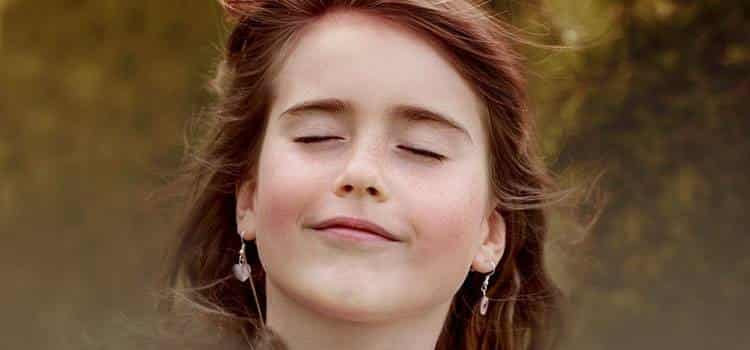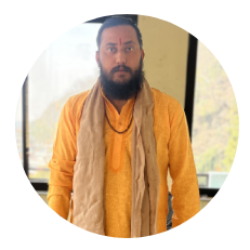WHY IS MEDITATION IMPORTANT?
Meditation is important for many reasons. First, meditation begins a process of multi-dimensional actualization. It has a profound impact on your life which includes balance, wakefulness, wholeness, and the ultimate fulfillment of being human. Meditation is said to be a habitual process of taming your mind to focus and redirect your thoughts. You can use it to increase your self-awareness.
It works wonders in reducing stress and developing concentration. Meditation also helps to create positive thoughts, good habits and better emotions, also to have a positive outlook, healthy sleep patterns, self-discipline, and even increased pain tolerance. The popularity of meditation is increasing day by day across the globe as more people discover its benefits.
IS MEDITATION A RELIGIOUS PRACTICE?
Dhyana is one of the eight steps of Raja Yoga of the Patanjali. In meditation, your mind is relaxed, calm and inwardly focussed. You are fully alert and awake and your mind is not paying attention to the external world and what is happening around you. There have even been hundreds of researches and studies that prove meditation is not a part of any religion; it is a science, which follows a certain order, has specific principles, and produces results that can be verified.
Meditation has played a vital role in several spiritual and religious practices but it's independent of any religion. In fact, meditation becomes more effective when decoupled from any sort of religious practice. Unlike religion, dhyana does not mean unreal and amorphous concepts. The constant practice of meditation wakes you up and leads you to the path of self-realization.
WHAT IS THE GOAL OF MEDITATION?
We all have always been educated only to observe and verify things in the outside world. Not even a single person has taught us how to look inside, find ourselves, and verify our true being. Hence, we always remain unfamiliar with ourselves, while trying to socialize and get to know others. The main reason that the relationships don’t work out is the lack of self-understanding. And that’s why we get confused and disappointed in our lives. A very tiny part of our mind is cultivated by the formal educational system. The portion of the mind that controls dreams and sleeps—the vast sphere of the subconscious mind is the storage of all our past experiences. It is a fact that the whole of our body resides in the mind, but the whole of our mind is not in the body. Without the practice of meditation, there is no other method to actually control the totality of the mind.
The purpose to do meditation is to go beyond the mind and experience our true nature of peace, love, and bliss. The one who practices meditation knows that the mind itself is the major obstacle standing between us and this awareness. The mind is unruly and undisciplined, and it resists the attempts to tame it or to direct it on a particular path. When people sit to meditate, they experience daydreams, fantasies, or hallucinations. It is difficult in the beginning to attain the stillness that distinguishes the authentic experience of meditation.
From childhood, we are taught by our parents and elders how to move and act in the external world, but we are never taught how to be still and examine what is within ourselves. When we learn to do this through meditation, we experience the utmost of all joys that can ever be attained by any other means. All the other pleasures in the world are transitory, but the joy which comes from meditation is immense and everlasting. It is the ultimate truth experienced by the long line of sages, both those who renounced the world and attained truth, and those who continued living in the world yet remained unaffected by it.
WHAT ARE THE PREPARATORY STEPS FOR MEDITATION?
- FIX A TIME SCHEDULE
- FIND A QUIET PLACE
- COMFORTABLE POSTURE
- NOTICE YOUR BREATHING
- OPEN EYES GENTLY
- CONCLUSION

FIX A TIME SCHEDULE:
You need to schedule a specific place to do daily practice and stick to the same. Early morning time between 3:30 and 5:30 is Brahmamuhurta because nature is serene, pure and more energetic. Also, the mind is more refreshed, calm and peaceful after a goodnight's sleep. This time of the day is dominated by sattva guna which signifies the purity in the mind and in the atmosphere too.
During this time of the day, the current of Raga-Dvesha is not that active and has not entered the mind. Early morning time is the best to mould your mind and infuse it with divine thoughts.

FIND A QUIET PLACE:
Like a fixed time schedule a definite and quiet place really counts. Choose a peaceful, uncluttered and quiet place where you will not be disturbed.
An ideal place can enhance your practice and brings tremendous benefits too. It becomes easy to connect to yourself in nature like in the mountains, on the beaches, near rivers, etc even in spiritual places too.

COMFORTABLE POSTURE:
Posture makes a difference too. You can sit on the floor with a cushion under your sit bones or in a firm chair, with your spine straight and your eyes closed. Meditative postures like Sukhasana, Padmasana, Siddhasana, etc can also be chosen for a relaxed, comfortable and steady pose.
Then bring your awareness slowly to your body, allowing all the muscles in your body to relax except those that are supporting your head, neck, and back.

NOTICE YOUR BREATHING:
Once your body is relaxed and calm, bring your whole awareness to the breath. Breathing should be deep, slow and silent and it should come primarily through the movement of the diaphragm. Breathe through the abdomen and not through the thoracic.
Just observe the natural flow of breath without trying to control it. Be mindful of each breath you take without judging or attempting to control or change it. It may be irregular and difficult at the first, but gradually your breath will become smooth and even, without pauses and jerks.

OPEN EYES GENTLY:
After the end of your meditation, open your eyes gently and gradually. Take time to be aware of your body and your surroundings.
So don’t be in a hurry to open your eyes as it can disturb the flow of energy in the body.

CONCLUSION:
Meditation means gradually understanding all the levels of your being, one level after another. Be honest with yourself and your practice. Don’t care what others say about their experiences—keep your mind focused on your goal.
It is your own mind that does not let you meditate. To train your mind, you’ll have to be patient and work with yourself gradually.


